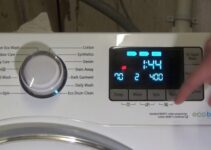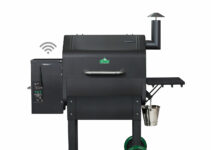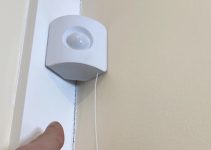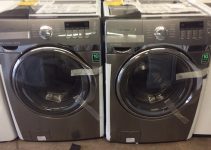It’s almost summertime, and despite loving bright weather, we can’t help but dislike the heat that comes with it. Meanwhile, it worsens when your trusty portable air conditioner fails to work. Extreme heat can be uncomfortable and, most times, bad for our skin.
Luckily, in this article, we will go through different processes to fix a faulty portable air conditioner. Although all the procedures listed here are associated with different problems, you can carry out all to make sure your equipment starts working again. Even better, you don’t need to be a technician to follow the guides, just enthusiasm for DIY tasks will do.
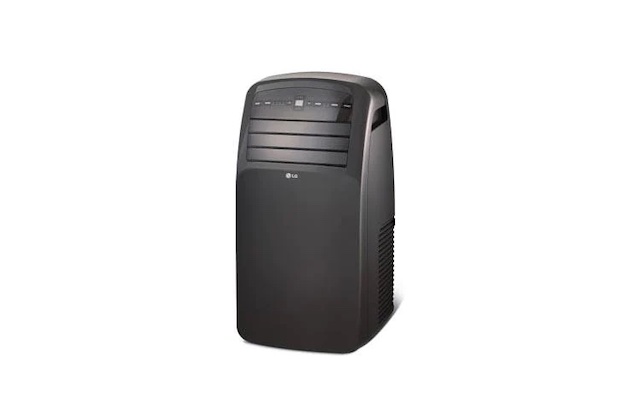
LG Portable Air Conditioner Not Cooling: Likely Causes
- Blocked air filters
- Dirty condenser coil
- Frozen evaporator coil
- Exhausted coolant
- Defective thermostat
- Defective compressor
- Defective AC remote
- Leakage in Insulation
LG Portable Air Conditioner Not Cooling: DIY Fixes
A couple of these DIF fixes when your LG portable air conditioner is not working may require you purchase new parts altogether. However, these simple guidelines will help you determine if you actually need new parts and how to replace especially if the damage isn’t worse enough to call an HVAC technician.
Blocked Air Filters
The air filters are one of the first areas to check if your LG portable air conditioner is not working. A clogged air filter reduces or completely stops air supply in the AC system, thus reducing cooling efficiency. Ideally, you want to be cleaning this part every two weeks as recommended by the LG portable air conditioner guidelines.
You can follow these few steps to clean yours;
- Please turn off the AC and wait for about 30 minutes for it to cool
- Take out the filter cover
- Pull out each filter by holding the handle at the top-center
- If the filters are not damaged or too dirty (assuming you’ve been cleaning every two weeks), you can blow them (one by one) with a vacuum cleaner or a blower. In case of very dirty filters, wash with water and some detergent. Also, it’s important to know that you should never use hot water or harsh abrasives for washing.
- Finally, leave to dry and place back – ensure they all clip in place.
Dirty Condenser Coil
Like the radiator in a car, a condenser helps dissipate heat in an AC system. While that’s the case, its coil must be clean for the condenser to function properly. A dirty condenser coil greatly reduces the efficiency of how the byproduct (heat) in an AC is expelled; as such, the heat stays longer, which makes the AC appears not to be cooling.
It’s important you keep your condenser coil free of grime and grease. You’d want to check this part regularly as well, preferably as you’re done cleaning the air filters. Cleaning the condenser coil should always be done with a self-rinsing corrosion inhibitor.
Frozen Evaporator Coil
You read right; sometimes over cooling of some parts might be your problem. The evaporator coil’s function is to extract heat from the air in the room and add it to the refrigerant. In cases where the coil’s temperature is very low, condensation will occur, thus leading to a frozen evaporation coil.
Frozen coils will ultimately prevent your cooling unit from venting air, thus, stopping cool airflow. You can fix it by removing the grill and pulling out the filters to observe for any signs of frost. If present, you want to leave the AC turned off for a while and let the ice melt off. You may use the FAN mode to speed up the process if you want your unit working as soon as possible.
Exhausted Coolant
This problem is quite common among old AC units. Although the coolant of AC units evaporates through the evaporator coils to generate cool air – this component is often preserved by the thermostat regulating the cooling cycle. In cases where it’s served for a reasonable amount of time, its level may drop and become insufficient for the AC unit. You’d want to call an HVAC technician for a refill or total replacement.
Defective Thermostat
The thermostat sensor feeds the AC unit with the temperature information of the room, and deviation from the required temperature triggers the cooling cycle automatically.
When this part gets faulty, the AC unit will either not cool because it doesn’t register a difference in temperature or fails to regulate its cooling cycle, thus cooling continuously (which is also a problem).
You can fix it by pressing the Mode button to check if it’s responsive – when responsive, make sure it’s set to COOL. Then set the level of cool air you want; make sure it’s below your current room’s temperature. However, in the case where there’s no response when you try adjusting the cool air settings, you may need the assistance of an HVAC technician to install a new thermostat.
Defective Compressor
A compressor is the heart of any cooling unit; most faulty air conditioners are a result of a bad compressor. The compressor’s motor compresses the coolant and circulates it through the evaporator coils. In the cases where the previously mentioned problems are absent, the problem is likely from a defective compressor.
For fixes like these, you may need the assistance of an HVAC technician to install a replacement.
Defective Remote Control
Sometimes the problem can be from a bad remote, especially with the issue of thermostat settings. First, you can try changing the batteries to test if the remote’s board is still working. If there are any further failures, you may need a new replacement, as remotes aren’t the most repairable tools.
Leakage in Insulation
There can be instances where the unit is working properly, but you just need to close the open windows. When doors or windows are left open, an AC may stop blowing cool air efficiently, leaving you to think there’s a malfunction in the unit.
